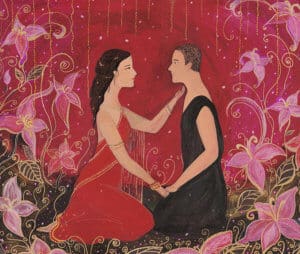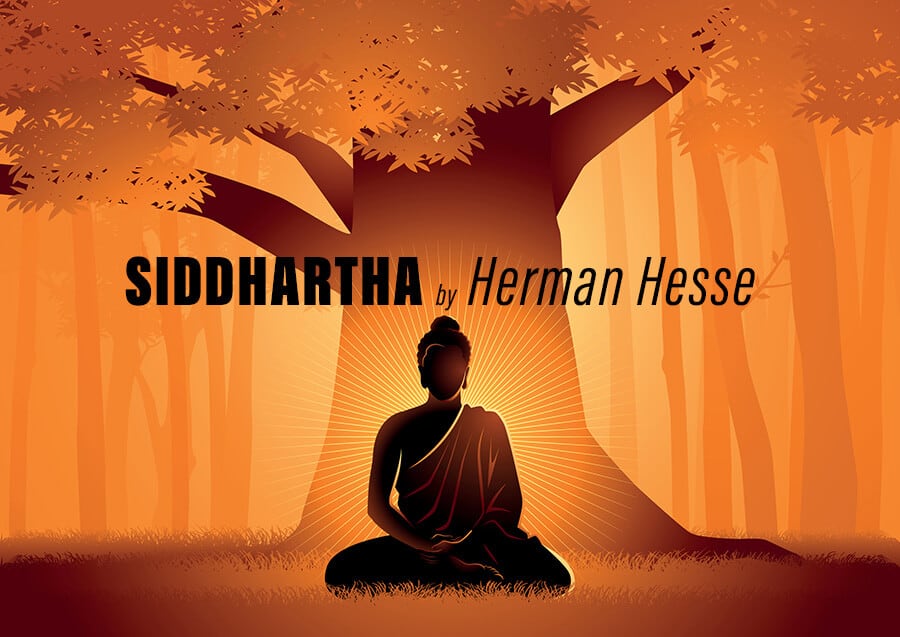Surely you have heard about Herman Hesse and his masterpiece known worldwide as Siddhartha. Some people refer to it as a book of enlightenment, wisdom and a path to inner peace. Here’s a glimpse of what I understood from Siddhartha’s journey!
Siddhartha, this famous novel of Hermann Hesse was written back in 1922, originally in German language. Generally speaking, the book is written in a pretty simple, lyrical style. It was published in the U.S. in 1951 only to become highly influential during the 1960s.

He who has found meaning
What does the name Siddhartha mean, though? The word Siddhartha is made up of two words in the Sanskrit language. The first one, siddha – which means achieved and the second word, artha which means what was searched for. Combining these two together, Siddhartha means “he who has found meaning (of existence)” or “he who has attained his goals”. In fact, Siddhartha Gautama, Prince of Kapilavastu was the name of the great Buddha’s himself, as this is what he was called before his renunciation. However, in this novel, the Buddha is referred to as “Gotama”.
All readers can at some point in their life identify with the tormenting journey of Siddhartha, in search of self. Whether you are in your adolescent years, looking for meaning, whether you are on your middle age period, or gray and old – Siddhartha manages to smoothly touch the feelings of people throughout all timelines of this odd cycle of what we call life.
In the ancient Indian kingdom of Kapilavastu, we find Siddhartha, a bright young man, who has a great, wealthy family that loves him. He is worshiped by his father and his teachers, yet, he is not content with his life. He simply feels that in order to find peace, he must first suffer and unlearn what he has learned throughout his growth. This is where we find him performing his first act of rebellion, that leads him to a whole new way of life. Siddhartha decides to confront his father, leave behind his whole family and home, to become an ascetic and join the lifestyle of the Samana beggars.
Along with his friend and faithful companion, Govida, Sidhartha renounces all his personal possessions. He fasts and becomes homeless, also practicing intense meditation, and on the same period of his life, he meets the famous Buddha – the enlightened one. Although he is amazed by the wisdom of Buddha’s teachings, he does not follow him. Instead, Siddhartha confronts Buddha, saying claiming that his teachings cannot possibly apply to people’s distinct experiences. Siddhartha decides that he needs his own experiences in life, from which he can extract the teaching. So he decides to continue the quest alone.
The Self I wanted to free myself from

“Slowly, the thinker walked along in his thoughts and asked himself: “But what is this, what you have sought to learn from teachings and from teachers, and what they, who have taught you much, were still unable to teach you?” And he found: “It was the self, the purpose and essence of which I sought to learn. It was the self, I wanted to free myself from, which I sought to overcome. But I was not able to overcome it, could only deceive it, could only flee from it, only hide from it. Truly, nothing in this world has kept my thoughts thus busy, as this my very own self, this mystery of me being alive, of me being one and being separated and isolated from all others, of me being Siddhartha! And there is nothing in this world I know less about than about me, about Siddhartha!”
While he shifts towards a different, city life, Siddhartha meets the beautiful Kamala, the city’s most famous courtesan who captures his heart and leaves him mesmerized. He continues to approach her, and begs her to become his ‘teacher’ so that he can learn more from the art that Kamala practices, the art of love. Kamala also falls head over heels over Siddhartha’s handsome appearance and wisdom, yet, she asks him to become very wealthy, so that he can win her over.
This is where Siddhartha’s life completely shifts and goes downhill, as he agrees to become what Kamala wants of him, although he despises materialistic pursuits as a Shramana. Siddhartha becomes Kamaswami’s personal adviser on all trade deals, as the local businessman notices how wise, patient and reflective Siddhartha is.
Time passes by sooner than Siddhartha even notices, and he becomes a rich man, continuing to benefit from Kamala’s love. His days become dull, filled with anxiety and anger that Siddhartha gets from his business and wealth. One night, as he gazes the face of his lover, Kamala, he realizes just how much time has passed, and how much they have both grown old. He goes on to his house, only to realize that he is now a middle aged man, full of bitterness and sorrow, and that he has wasted so many years without feeling any spiritual fulfillment.
With a heart full of anguish, Siddhartha leaves the city and returns to the river he had once crossed towards the city, completely shattered and tired of life with the aim of committing suicide. Right as he surrenders to do so, and starts to fall into a meditative sleep, he is saved by the sound of what he considers to be his internal experience of the holy word, Om. He wakes up fully alerted, and having realized the mistake he was about to do fills him up with adrenaline, more love for life and the joy of having learned a good lesson of it.
I see whatever exists as good
Siddhartha decides to live in this holy river that had saved his life, while also reuniting with the ferryman, Vasudeva, whom teaches Siddhartha the secrets of a humbler life and the way to get to understand the echoes of the river. Later on, Siddhartha is again tormented by the son he has with Kamala. It is through the denial of his son that Siddhartha manages to learn even more about a pure, unconditional love that makes most humans – humans.
He goes through many more experiences of anguish but saves himself while listening to the river with Vasudeva. As he listens patiently, day to day, Siddhartha realizes that time is an illusion and that all of his feelings and experiences, even those of suffering, are part of a great and ultimately jubilant fellowship of all things connected in the cyclical unity of nature. After Siddhartha’s moment of illumination, Vasudeva claims that his work is done and he must depart into the woods, leaving Siddhartha peacefully fulfilled and alone once and for all.
Even Govinda, Siddhartha’s childhood friend that had chosen another path, reunites with Siddhartha and asks the now old friend to also tell him the meaning of life, to which Siddhartha replies:
“I see whatever exists as good, death is to me like life, sin like holiness, wisdom like foolishness, everything has to be as it is, everything only requires my consent, only my willingness, my loving agreement, to be good for me, to do nothing but work for my benefit, to be unable to ever harm me. I have experienced on my body and on my soul that I needed sin very much, I needed lust, the desire for possessions, vanity, and needed the most shameful despair, in order to learn how to give up all resistance, in order to learn how to love the world, in order to stop comparing it to some world I wished, I imagined, some kind of perfection I had made up, but to leave it as it is and to love it and to enjoy being a part of it.”
He continues explaining his thoughts to Govida, claiming that nature works in a self-sustaining cycle, every entity carries in it the potential for its opposite and so the world must always be considered complete. The book ends with Govinda bowing to his wise friend and with an image of them both smiling radiantly to one another, having found enlightenment.
My own perception of this book, is that it is so simple, that you may occasionally think of it as very complicated. The simplicity of life is so well reflected throughout the lines, that you may sometimes view the book as shallow, and other occasions as immensely deep. Yet, the lesson that Siddhartha tries to teach us all, is to pursue our very own gut when in search for the self, and to never stop seeking until we have found a time-to-time sense of balance.
Photos: Shutterstock / Edited by: Martina Advaney
Read more reviews here:
Support us!
All your donations will be used to pay the magazine’s journalists and to support the ongoing costs of maintaining the site.
Share this post
Interested in co-operating with us?
We are open to co-operation from writers and businesses alike. You can reach us on our email at cooperations@youthtimemag.com/magazine@youthtimemag.com and we will get back to you as quick as we can.









